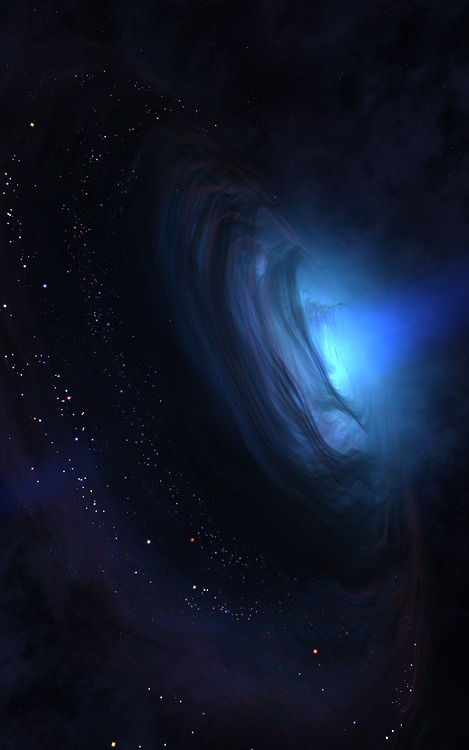Fluids Round-Up
Fluids Round-Up
New year, new (or renewed) experiments. This is the fluids round-up, where I collect cool fluids-related links, articles, etc. that deserve a look. Without further ado:
Above is a new music video from the Julia Set Collection, featuring all non-CGI, fluids-based visuals. I spy soap films, vibrating liquids, and lots of cool effects with reflection and refraction. We featured some of their previous work, too.
The Atlantic has a great piece about jellyfish and how they might just change our understanding of efficient swimming.
Check out the wild shape-shifting of these drops of oil during freezing and learn about the plastic crystal phase some matter experiences.
Nature has an interesting article on active matter, an intersection of physics and biology exploring how matter self-organizes, whether at the level of cells or the flocking of birds. (submitted by 1307phaezr)
Ever wonder what the human face looks like in 457 mph winds? Wonder no more.
Gizmodo has a beautiful set of macro photos of snowflakes. Interested in how snowflakes form and why there are so many different shapes? We’ve got you covered.
Wired takes a look at the surf forecaster who predicts the waves for the Mavericks big-wave competition.
Robert Krulwich (and friends) took a closer look at our fish in microgravity. Here’s what they learned!

(Video credit and submission: Julia Set Collection/S. Bocci; image credit: IRPI LLC, source)
More Posts from Tracyjackman-blog and Others

September Total Lunar Eclipse Sequence
js
SMSW now on Instagram!
Follow @shitmystudentswrite on Insta

Cats Eye
js



Aurora over Scotland js

X-Ray Image of the Tycho Supernova
js

The Pelican Nebula in Gas Dust and Stars : The Pelican Nebula is slowly being transformed. IC 5070, the official designation, is divided from the larger North America Nebula by a molecular cloud filled with dark dust. The Pelican, however, receives much study because it is a particularly active mix of star formation and evolving gas clouds. The featured picture was produced in three specific colors – light emitted by sulfur, hydrogen, and oxygen – that can help us to better understand these interactions. The light from young energetic stars is slowly transforming the cold gas to hot gas, with the advancing boundary between the two, known as an ionization front, visible in bright orange on the right. Particularly dense tentacles of cold gas remain. Millions of years from now this nebula might no longer be known as the Pelican, as the balance and placement of stars and gas will surely leave something that appears completely different. via NASA
js
-
 techjum reblogged this · 4 years ago
techjum reblogged this · 4 years ago -
 thejellyfishthatgotaway-blog reblogged this · 8 years ago
thejellyfishthatgotaway-blog reblogged this · 8 years ago -
 thejellyfishthatgotaway-blog liked this · 8 years ago
thejellyfishthatgotaway-blog liked this · 8 years ago -
 aennte98 liked this · 8 years ago
aennte98 liked this · 8 years ago -
 dirtmound liked this · 9 years ago
dirtmound liked this · 9 years ago -
 kiniroki liked this · 9 years ago
kiniroki liked this · 9 years ago -
 velvetsunset reblogged this · 9 years ago
velvetsunset reblogged this · 9 years ago -
 bluedragonseye-blog liked this · 9 years ago
bluedragonseye-blog liked this · 9 years ago -
 sixthrangerknight reblogged this · 9 years ago
sixthrangerknight reblogged this · 9 years ago -
 nikklesz liked this · 9 years ago
nikklesz liked this · 9 years ago -
 rcka147 liked this · 9 years ago
rcka147 liked this · 9 years ago -
 makeanx reblogged this · 9 years ago
makeanx reblogged this · 9 years ago -
 journeyways reblogged this · 9 years ago
journeyways reblogged this · 9 years ago -
 danialanis10 liked this · 9 years ago
danialanis10 liked this · 9 years ago -
 jeraldine-mercenarysith liked this · 9 years ago
jeraldine-mercenarysith liked this · 9 years ago -
 bertolini27-blog liked this · 9 years ago
bertolini27-blog liked this · 9 years ago -
 actiaslunaris reblogged this · 9 years ago
actiaslunaris reblogged this · 9 years ago -
 hinkumphinneyduster reblogged this · 9 years ago
hinkumphinneyduster reblogged this · 9 years ago -
 hinkumphinneyduster liked this · 9 years ago
hinkumphinneyduster liked this · 9 years ago -
 penguinzlove liked this · 9 years ago
penguinzlove liked this · 9 years ago -
 randompolypodizia liked this · 9 years ago
randompolypodizia liked this · 9 years ago -
 m-zer0bot liked this · 9 years ago
m-zer0bot liked this · 9 years ago -
 shamedintoleaving liked this · 9 years ago
shamedintoleaving liked this · 9 years ago -
 actrightcoll-blog liked this · 9 years ago
actrightcoll-blog liked this · 9 years ago -
 actrightcoll-blog reblogged this · 9 years ago
actrightcoll-blog reblogged this · 9 years ago -
 manny8725-blog liked this · 9 years ago
manny8725-blog liked this · 9 years ago -
 lifeissweetas liked this · 9 years ago
lifeissweetas liked this · 9 years ago -
 kakirokero liked this · 9 years ago
kakirokero liked this · 9 years ago -
 mehtheist-blog liked this · 9 years ago
mehtheist-blog liked this · 9 years ago -
 portal-panda liked this · 9 years ago
portal-panda liked this · 9 years ago -
 distantbeliefs reblogged this · 9 years ago
distantbeliefs reblogged this · 9 years ago -
 starhasarrived reblogged this · 9 years ago
starhasarrived reblogged this · 9 years ago -
 starhasarrived liked this · 9 years ago
starhasarrived liked this · 9 years ago -
 ribcageumbrella reblogged this · 9 years ago
ribcageumbrella reblogged this · 9 years ago -
 q-lvck reblogged this · 9 years ago
q-lvck reblogged this · 9 years ago -
 petrichor-and-lemonade liked this · 9 years ago
petrichor-and-lemonade liked this · 9 years ago -
 laindieana reblogged this · 9 years ago
laindieana reblogged this · 9 years ago